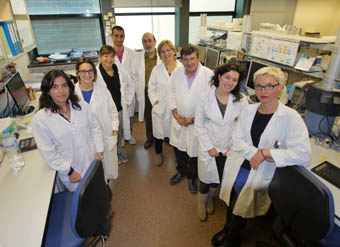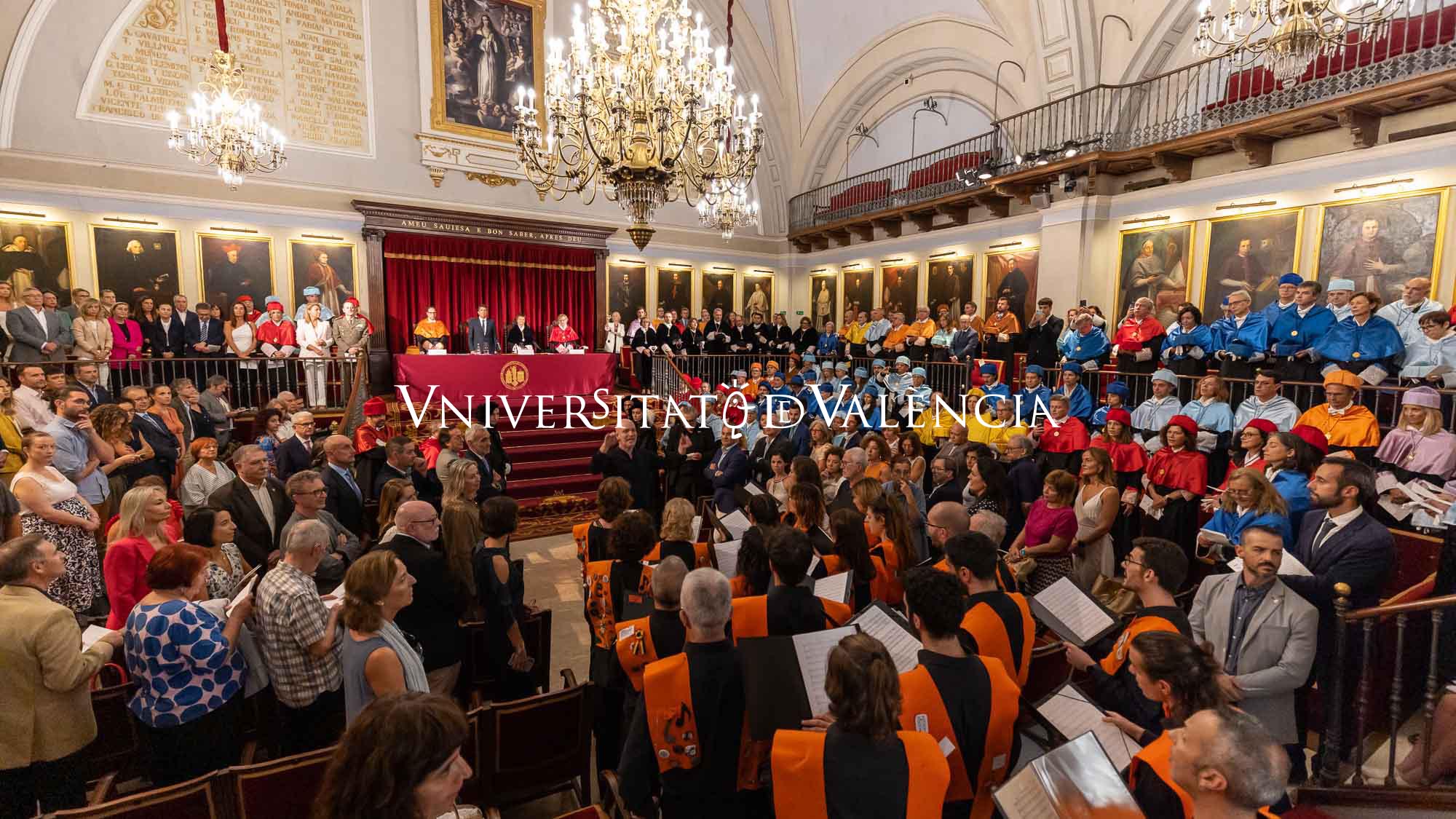
Professor of Histology at the Faculty of Medicine and Dentistry of the University of Valencia Rosa Noguera leads research with digital images of neuroblastomas in children. This month she has been entrusted with a project by the Spanish Healthcare Research Fund (FIS) allocated €122.800 for three years.
The study aims at developing software products that can be used to identify therapeutic targets and find more individualised treatments against this type of cancer, the third most common in childhood only after leukaemia and those affecting the central nervous system.
This project seeks to apply innovative techniques in microscopic imaging and computational genetics as key tools for developing an improved predictive model. For this, the research team will study the physical interactions between neuroblast cells, the cells around them (stromal cells; for example, those involved in the immune response) and the extracellular matrix (group of fibrous and viscous elements which provide physical support by surrounding the cells) so as to consider whether to include them as therapeutic targets for this kind of childhood tumour.
Algorithms at the service of prevention
The group headed by Rosa Noguera will develop and integrate the analysis of the microscopic images of 400 tumours using the infrastructure of the UV Faculty of Medicine’s biobank, made up of 23,100 histological microscopic images, dyed through different methods, by means of using algorithms or specific software products to quantify and characterise both cellular elements and those of the extracellular matrix.
The objective of this project is ‘to find new morphological and topological characteristics of these elements, which have not been fully investigated despite the fact that they are among tumour cells forming tumour mass, and which we consider can help us identify sub-groups of patients with a higher risk of relapse or death’, argues Rosa Noguera. She also explains how important it is that scientists ‘know how tumour cells feel and use their environment in order to interpret these messages and reduce their survival’.
The identification of this new information through microscopic images and computational genetics ‘will allow us to walk a step further in individualised therapies based on biotensegrity architecture at the tissue and molecular level’, according to Noguera. Additionally, she insists that this could be ‘the scientific basis for tumour mechanotherapy and innovative therapeutic protocols applicable to this and other pathologies’. The use of these algorithms could also be required for assistance at the pathological anatomy services in the different hospitals within the national health system.
15% of cancer deaths, in children
A neuroblastoma is an extremely heterogeneous paediatric tumour which accounts for 15% of all deaths from cancer in children, although survival rates have improved over the last few years. It is the most frequent solid extracranial tumour among children and is mostly found in the abdomen (65%). The average age for diagnosis is around 18 months —approximately 40% of patients are diagnosed during their first year of life; 75%, before reaching 4 years of age; and 98%, before the age of 10. In Spain, an average of 70-100 children aged between 0 and 14 are diagnosed each year, only behind leukaemia and brain tumours. Neuroblastomas may disappear or become benign spontaneously or chemically or they may grow invasively despite intensive treatments. For this reason, ‘it is necessary to identify factors present in tumour tissues that are related to the different disease evolutions’, the researcher points out.
Rosa Noguera is a doctor and a full university professor in Histology at the Department of Pathology of the University of Valencia. She has devoted her almost 30 years of activity to characterise the genetics of over 2,000 child tumours diagnosed in Spain. Along with teaching, she coordinates the Laboratory of Molecular Pathology at the UV Faculty of Medicine and Dentistry (National Reference Centre for Neuroblastoma Biological Studies). Concurrently, she has carried out extensive basic and traslational research for the delimitation of new tumour markers in the fields of advanced genetics and histology. Noguera actively participates in the supervision of research works, in several national and international collaborations and in the group for genetic validation of neuroblastomas in Europe.
Last update: 18 de december de 2014 07:00.
News release















